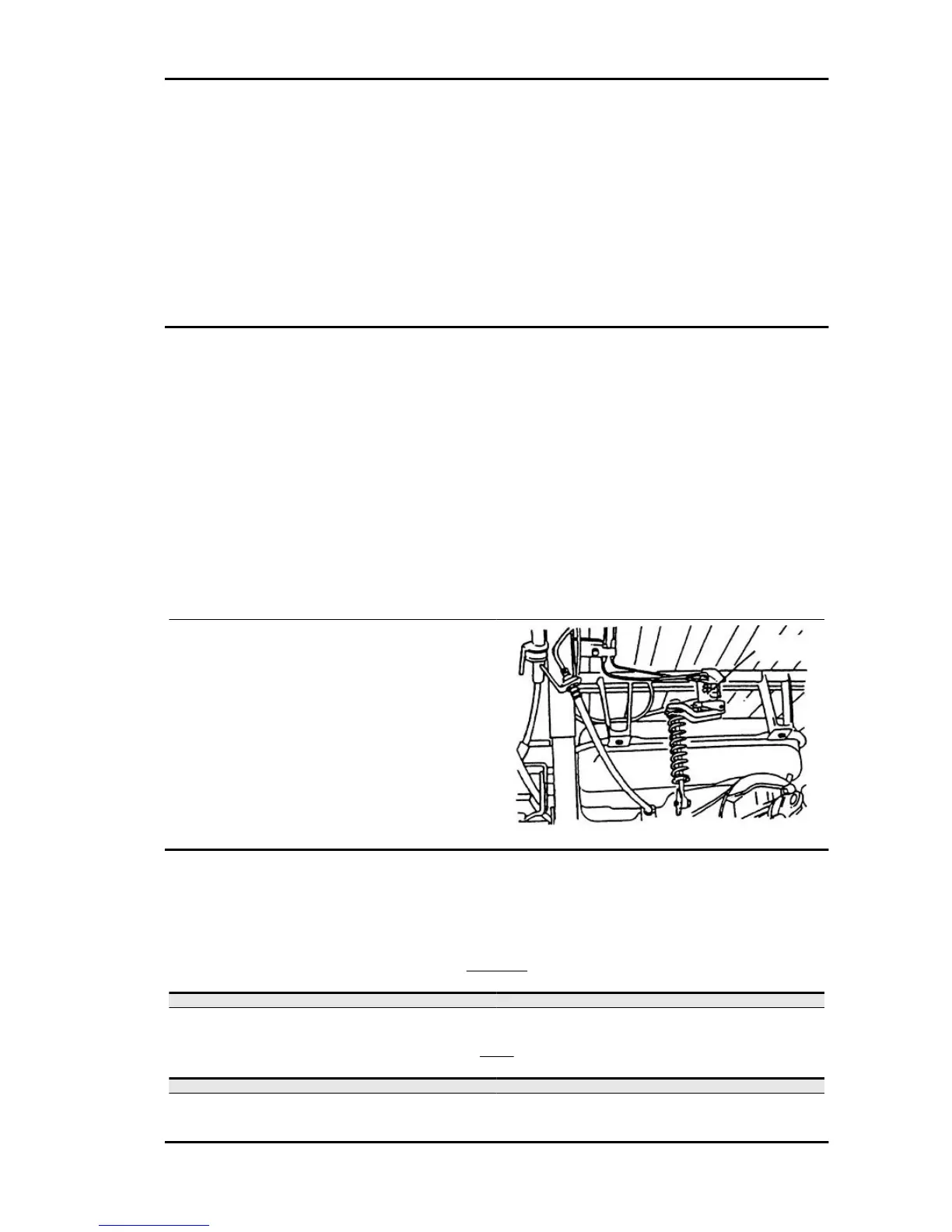Since no pressure is applied to the intermediate diameter section of piston A3, all force applied to the
piston, that is PM (A3 - A1), F and S, acts so that the piston is thrust into the body . Therefore, a clearance
between the large diameter section of piston A2 and the metal gasket remains. Consequently, the
pressure of the main cylinder PM is transmitted to the rear brake.
PM = PR
5. When no more reaction force F is generated towards the piston:
If the spring or the connection system were broken, the braking system works as valve P.
Inspection2
Inspection
1. Preliminary arrangements before the inspection
•
Park the vehicle on a flat surface and pull the parking brake.
•
Place weights on the vehicle with an individual sitting at the driving position, load the rear
axle with 400 - 800 kg weights for the Pick up and 450 - 800 kg weights for the Van.
•
Move the vehicle slowly one meter, forwards and backwards, then return the vehicle to the
original position and pull the parking brake.
•
Connect a gauge to the front calliper and to the left rear wheel cylinder respectively.
•
Bleed the air of the gauges.
Check that the LSPV valve is not damaged.
2. Calculation to check front brake pressure:
Calculate pressure at the LSPV turning point according to the weight on the rear axle Wr (kg), with the
following formula:
PICKUP
Specification
Desc./Quantity
Rear axle weight: [ 450 kg (MPa): Pc = 21.6 x 10-3 Wr - 6.7
Rear axle weight: [ 450 kg (MPa): Pc = 71.6 x 10-3 Wr - 0.21
VAN
Specification
Desc./Quantity
Rear axle weight: [ 463 kg (MPa): Pc = 9.95 x 10-3 Wr - 2.57
Rear axle weight: [ 463 kg (MPa): Pc = 20.2 x 10-3 Wr - 6.7
PORTER 1.3 16V Braking system
BS - 645

